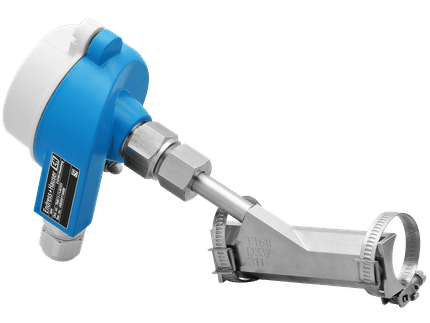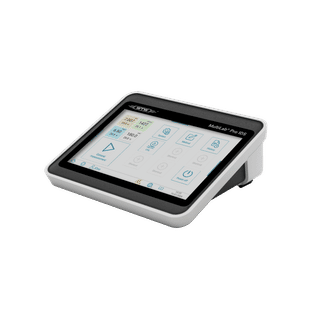|
|
This article or section is missing citations or needs footnotes.
Using inline citations helps guard against copyright violations and factual inaccuracies. (July 2007) |
Oxygen therapy is the administration of oxygen as a therapeutic modality. Oxygen therapy benefits the patient by increasing the supply of oxygen to the lungs and thereby increasing the availability of oxygen to the body tissues.
Appropriate levels of oxygen are vital to support cell respiration. High blood and tissue levels of oxygen can be helpful or damaging, depending on circumstances. Hyperbaric oxygen therapy is the use of high levels of oxygen for treatment of specific diseases. High levels of oxygen given to neonates causes blindness by promoting overgrowth of new blood vessels in the eye obstructing sight. This is Retinopathy of prematurity (ROP). Administration of high levels of oxygen in patients with severe emphysema and high blood carbon dioxide reduces respiratory drive, which can precipitate respiratory failure and death.
Oxygen first aid specifically refers to the use of oxygen in a first aid setting. Oxygen will assist patients with myocardial infarction and hypoxia (low blood oxygen levels). Care needs to be exercised in patients with chronic obstructive pulmonary disease, especially in those known to retain carbon dioxide (type II respiratory failure) who lose their respiratory drive and accumulate carbon dioxide if administered oxygen in moderate concentration. For this reason, some jurisdictions require medical approval for all emergency oxygen administration.
Home or domiciliary oxygen therapy
This refers to the administration of oxygen as ongoing therapy, either continuously or intermittently. Most commonly patients on home oxygen therapy have severe chronic obstructive pulmonary disease caused by smoking. High concentration (approaching 100%) oxygen is used as home therapy to abort cluster headache attacks, due to its vaso-constrictive effects.[1] It is indicated in COPD patients with PaO2 ≤ 55mmHg or SaO2 ≤ 88% and has been shown in a Medical Research Council study to increase survival.
Oxygen sources and delivery
There are three typical sources of oxygen used therapeutically:
- Liquid oxygen is contained in thermally insulating tanks. The liquid has to boil changing into a gas for breathing. Large tanks are used by hospitals. Small tanks can be used domestically. Liquid oxygen tanks are refilled by liquid oxygen suppliers.
- Cylinders contain compressed gaseous oxygen. Small cylinders are used for first aid and for home oxygen patients when mobility is required. Cylinders are refilled by a gas supplier.
- Oxygen concentrators are electrically powered devices which remove nitrogen from air. They are most commonly used in a domestic situation, because they do not need refilling. However, a number of manufacturers have introduced portable oxygen concentrators. These have replaced[2] the need to use liquid or gas cylinders for mobility for many patients. These can typically use AC, DC, or battery power. Some portable concentrators have only pulse or demand flow capabilities, while continuous flow portables are available. Pulse or demand flow is similar to the way an oxygen conserving device delivers oxygen from liquid oxygen or a gas cylinder only during inhalation, but on a concentrator, the oxygen made in between pulses is stored for the next pulse. Where a conserving device can make a liquid or gas container last longer, pulse or demand settings on oxygen concentrators can make a certain flow appear as a higher effective flow, or reduce power consumption and/or extend battery life. For usage on aircraft see Oxygen therapy while on aircraft.
First aid kits have been produced that create oxygen gas as the result of a chemical reaction between lightweight or widely available substances such as sodium percarbonate and water, although the rate and duration of oxygen supply is not high. [1]
Oxygen is most often delivered as continuous gaseous flow, measured in litres per minute (lpm).
Administration
Various devices are used for administration of oxygen.
- The nasal cannula (NC) is a thin tube with two small nozzles that protrude into the patients nostrils. It can only provide oxygen at low flow rates, 2-6 litres per minute (LPM), delivering a concentration of 28-44%. It is used in patients who can benefit from oxygen therapy but do not require it to the degree of wearing an uncomfortable mask. It is especially useful in those patients where vasoconstriction could negatively impact their condition, such as those suffering from strokes, or "brain attacks." Use of the NC at relatively high rates can cause discomfort by drying the nasal passages.
- The simple face mask (SFM) is a basic mask used for non-life-threatening conditions but which may progress in time, such as chest pain (possible heart attacks), dizziness, and minor hemorrhages. It is often set to deliver oxygen between 2-10 LPM. The final oxygen concentration delivered by this device is dependent upon the amount of room air that mixes with the oxygen the patient breathes. The air mixing is determined by how much air any individual is breathing, at the moment, and the fit of the mask. Oxygen concentrations are uncontrolled. A venturi device attached to the mask can be used to control to some degree the concentration of oxygen delivered, usually this is used to prevent respiratory depression in emphysema patients who have lost their respiratory drive. The final oxygen concentration is still dependent on the degree of mixing with room air.
- The non-rebreather mask (NRB) is utilized for patients with multiple trauma injuries, chronic airway limitation/chronic obstructive pulmonary diseases, smoke inhalation, and carbon monoxide poisoning, or any other patient who requires high-flow oxygen, but does not require breathing assistance. It has an attached reservoir bag where oxygen fills in between breaths, and a valve that largely prevents the inhalation of room or exhaled air. This allows the administration of high concentrations of oxygen, between 80-100%. This device is set to 12-15 lpm, or at least enough to keep the reservoir inflated between breaths. Strictly, "Non-rebreather" masks are "partial-rebreather" (PRB) masks; a non-rebreather mask would ideally not permit air from the surrounding environment to be inhaled. However, since the only NRM or PRMs in current use are made with disposable plastic, the fit of the mask is often inadequate to avoid air mixture.
- The bag-valve-mask (BVM) is used for patients in critical condition who are either breathing extremely inefficiently, or not breathing at all (respiratory arrest). An oxygen reservoir bag is attached to a central cylindrical bag, attached to a valved mask that administers almost 100% concentration oxygen at 8-15 lpm. The central bag is squeezed manually to deliver a "breath" to the patient, or assist them in breathing by doing some of the work for the lungs.
- The pocket mask is a small device that can be carried on one's person. It is used for the same patients who the BVM is indicated for, but instead of delivering breaths by squeezing a reservoir, the care provider must actually exhale into the mask. Pocket masks normally have one-way valves built into them to protect the provider from the patient's potentially infectious body substances. Many masks also have an oxygen intake built-in, allowing for administration of 50-60% oxygen. Without being hooked up to an external line, exhaled air from the provider can still provide sufficient oxygen to live (room air is approximately 21% oxygen, exhaled air is approximately 16% oxygen). The pocket mask should only be used when a BVM is unavailable, so it typically sees use from bystanders performing CPR, not medical professionals with adequate equipment.
- The anaesthetic machine is a machine used during anesthesia that allows a variable amount of oxygen to be delivered, along with other gases including air, nitrous oxide and anaesthetic gases.
- Aviator type and other specialized tight fitting oxygen masks are used in hyperbaric oxygen chambers and to provide oxygen to carbon monoxide victims.
Related devices
- A pressure regulator is used to control the high pressure of oxygen delivered from a cylinder to a low pressure controllable by the flowmeter.
- A flowmeter is used to control and indicate the flow of oxygen. Typiclal flow range is 0-15 lpm.
- A nebulizer can be used deliver nebulizable drugs such as albuterol or epinephrine into the airways by creating a vapor-mist from the liquid form of the drug. Nebulizers are also commonly used with room air in the home with an electric air pump.
Negative effects
Although most EMS jurisdictions hold that oxygen should not be withheld from any patient, there are certain situations in which oxygen therapy can have a negative impact on a patient’s condition.
Oxygen has vasoconstrictive effects on the circulatory system, reducing peripheral circulation and was once thought to potentially increase the effects of stroke. However, when additional oxygen is given to the patient, additional oxygen is dissolved in the plasma according to Henry's Law. This allows a compensating change to occur and the dissolved oxygen in plasma supports embarrassed (oxygen-starved) neurons, reduces inflammation and post-stroke cerebral edema. Since 1990, hyperbaric oxygen therapy has been used in the treatments of stroke on a world-wide basis. In rare instances, hyperbaric oxygen therapy patients have had seizures. However, because of the afformentioned Henry's Law effect of extra available dissolved oxygen to nerons, there is usually no negative sequel to the event. Such seizures are thought to be caused by hypoglycemia and the risk can be eradicated or reduced by carefully monitoring the patient's nutritional intake prior to oxygen treatment.
Some jurisdictions require that oxygen should not be given to children or people suffering from certain long-term lung conditions by first-responders without medical consultation.
There are suggestions within the scuba diving community that oxygen administration may not be the most effective measure for the treatment of DCI/DCS and that Heliox may be a better alternative. However this is still at an early stage in research and as such O2 is still the major suggested treatment in diving related first aid. Recompression in a hyperbaric therapy chamber with the patient breathing 100% oxygen is the standard hospital and military medical resonse to DCI/DCS.
Oxygen should never be given to a patient who is suffering from Paraquat poisoning if his or her FiO2 is less than 50%, as this can increase the toxicity, making the patient's condition worse. (Paraquat poisoning is rare - for example 200 deaths globally from 1958-1978[2].)
Oxygen therapy while on aircraft
In the United States, most airlines restrict the devices allowed on board aircraft. As a result passengers are restricted in what devices they can use. Some airlines will provide cylinders for passengers with an associated fee. Other airlines allow passengers to carry on approved portable concentrators. However the lists of approved devices varies by airline so passengers need to check with any airline they are planning to fly on. Passengers are generally not allowed to carry on their own cylinders. In all cases, passengers need to notify the airline in advance of their equipment.
See also
References
- ^ Sands, George. Oxygen Therapy for Headaches (html). Retrieved on 2007-11-26.
- ^ McCoy, Robert. Portable Oxygen Concentrators (POC) Performance Variables that Affect Therapy (pdf). Retrieved on 2007-07-03.
|







